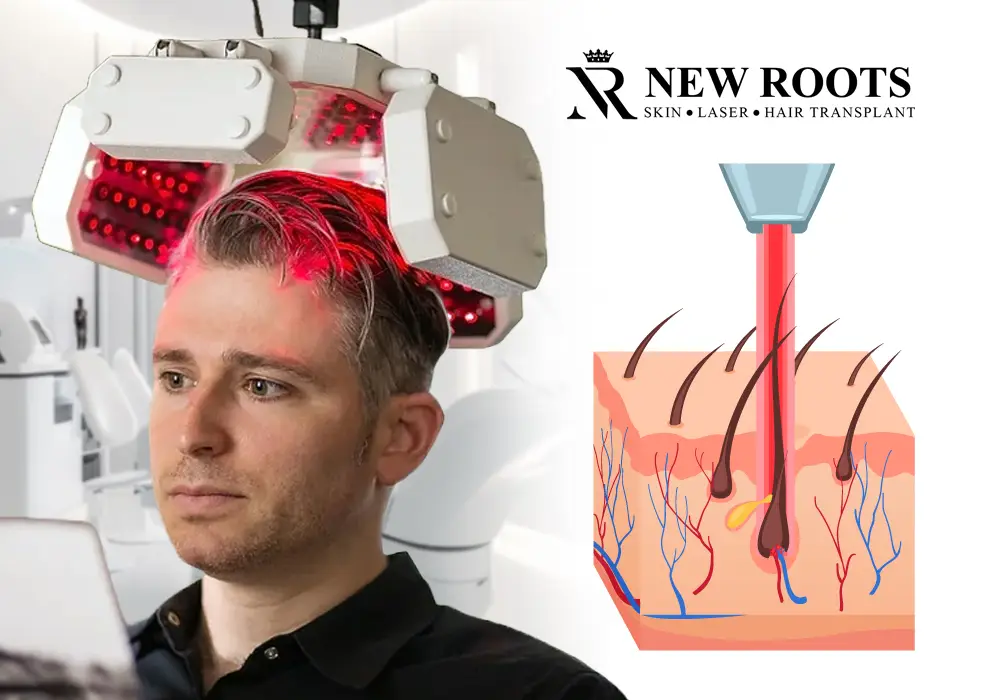Introduction
This part is an essential feature of any man or woman and distinguishes them from others; however, some differences between a mature hairline and a receding hairline may be without problems cited.
Understanding the key comparison—Mature Hairline vs Receding Hairline—is crucial for accurate identification and treatment.
The management of hair structures needs to have an appreciation of the distinction between these conditions.
This text reflects on the variations and differences between the mature hairline and the receding hairline and gives facts approximately their signs, reasons, and possible remedies.
Table of Contents
Understanding Mature Hairline vs Receding Hairline
What is a Mature Hairline?
The hairline recession, while having a mature hairline, represents the natural balding process in aging, where the hairline shifts backward from where it was found earlier in the growth stage of puberty to early adulthood, 17 to 27 years.
In most cases, it causes a barely noticeable “V” at the crown or a mild nascent widow’s peak without huge hair loss.

What is a Receding Hairline?
However, a receding hairline means that hair is gradually pulling back and there is a clear loss of hair or maybe signs of baldness, more so in male pattern baldness, which may begin in the late teens to early twenties.
That may have an ‘M’ like shape, and it depends mostly on hair type and is often an early sign of more hair loss or baldness.

Signs of Hair Loss: Mature Hairline vs Receding Hairline
This is why it is important to know the early signs of hair loss. Indicators of a mature hairline include:
Slowing the retrograde movement of 1-2 cm from the original position.
A progressive history of change in the hairline.
Conversely, signs of a receding hairline are more pronounced, including:
Recession in one half of the hairline and flattening of the scalp.
Difference Between Mature Hairline vs Receding Hairline
| Feature | Mature Hairline | Receding Hairline |
| General Description | The natural evolution of the hairline occurs with age. | Indication of potential hair loss or genetic issues. | |
| Appearance | Moves back in a straight and even line. | Typically resembles an “M” shape; may be uneven. |
| Causes | Normal aging and hormonal changes. | Primarily, genetic factors and conditions like male pattern baldness are involved. |
| Progression Speed | Gradual progression that stabilizes over time. | Rapid progression, often noticeable within months. |
| Extent of Recession | Usually recedes up to 1.5-2 cm. | It can recede beyond 2 cm and lead to bald spots. |
| Scalp Involvement | Limited scalp area affected; stays around the hairline. | Often accompanied by thinning at the temples and crown. |
| Age of Onset | Commonly begins in the late teens to twenties and stabilizes later. | Often begins in the late teens to mid-20s, continuing with age. |
Age and Hairline Changes
This study identified that hairline changes shall be attributed to age, which was an important demographic factor.
Almost everyone will notice some form of change in the hairline while entering their late twenties or early thirties, however, those with baldness genes in the family should be wary because much of the hair loss is caused by genes.
Hair loss or loss of hair texture and density at a fairly rapid rate
Hormones and Genetic Hair Loss
Dihydrotestosterone (DHT) and Its Place
Dihydrotestosterone (DHT) is acknowledged to play a central role in hair loss. This is produced from testosterone and is associated with major impacts towards a prominent forehead and a receding hairline.
The condition is caused by increased DHT levels; this causes the follicles to shrink and eventually, the hair falls off.
Men’s and Women’s Pattern Baldness
Baldness in men, commonly known as androgenetic alopecia, is reaching its incidence among men and is mostly genetically determined; it is estimated that more than eighty-five percent of men will be affected to some extent by this ailment by the age of fifty.

On the other hand, female pattern baldness is somewhat rarer, although this affects women’s hairline in other ways: with hair thinning in all areas, not just at the front line.
Common Causes of Hairline Changes

Traction Alopecia
Traction alopecia occurs when one constantly wears particular hairstyles that pull on the hair, thereby causing hair loss at the hairline. This situation can be eradicated through observing styles and taking good care to discourage hair breakage.

Frontal Fibrosing Alopecia
Frontal fibrosing alopecia is an autoimmune disease of the skin and hair that occurs in postmenopausal women and results in hair loss at the front and the crown of the head.
Hairline Differentiation Strategies
It may be a little difficult to distinguish between a receding hairline and a mature hairline at times.
By following the Norwood Scale, which was designed to classify the balding process in men, it is possible to define what kind of hair loss might be observed and whether it is a part of the male physiological process or more likely a prematurely recessive pattern.
Symptoms Indicating Hair Loss
Symptoms suggesting a receding hairline may include:
Hair loss while combing or washing hair.
Hairline recession, particularly temporal, is manifested by temporal hairline recessiveness.
Lifestyle Factors Influencing Hair Health

Diet and Nutrition
The nutrient density of foods that people eat is crucial to hair health. Supplementation with essential vitamins such as vitamins A, C, D, and E, and minerals, iron, and zinc will lessen hair loss and strengthen existing follicles.
Stress and Physical Training
Exercise is important in increasing blood flow to the scalp and hence the follicles. Further, stress can be effectively managed, and efforts such as meditation or Yoga should be adopted in a bid to minimize hair loss occurrences informed by stress-related disorders.
Hairstyle Choices
Women should avoid hairstyles and hair products that pull the hair tightly, since this causes traction alopecia.
When a woman chooses to wear her hair loosely, she will not develop traction alopecia.
Fashion should not be a tight ponytail, especially on the head part, because this creates pressure on hair follicles.
Treatment Options for Mature and Receding Hairlines
Hair Growth Oils
A number of the home treatments involve the usage of hair growth oils that assist feed the scalp and promote hair follicle growth through products like rosemary and peppermint oil.
Minoxidil and Finasteride
- Minoxidil: one of the few OTC lotions that can boost hair growth at the same time as lowering the quantity of hair shed.
- Finasteride: An oral tablets that aim at minimizing the severity of DHT in the body and thus decreases hair loss, especially among males sex.
Steroid Creams
Corticosteroids can also be used when inflammatory hair issues are a cause, such as with frontal fibrosing alopecia, to reduce symptoms and stimulate healthy hair regrowth.
PRP Hair Treatment
In PRP treatment, the practitioner implants the concentrate of platelets into the scalp tissues to promote hair regrowth and associated healing.
Laser Therapy
Purple mild therapy includes the use of low-level lasers that work to growth the metabolic rate of cells donated to the hair follicle.
Hair Transplant Options
To get a more lasting repair, the hair can be transplanted in cases like baldness, for instance. The two common techniques are:
- FUE: Includes procedures for harvesting individual follicles for transplant purposes.
- FUT: Also encompasses the excision of a strip of the scalp and the subsequent planting of follicles from that region.
Conclusion
Knowing the distinctions between having a grown-up hairline and having a receding hairline is fundamental to keeping hair healthy and treating any hair issues.
Therefore, if one recognizes these signs and gets to embrace the necessary lifestyle changes and treatments, one can treat these hair loss conditions to avert them.
It is very important always to seek medical advice or see a dermatologist or trichologist for advice and treatments that might help, depending on the condition of the hair.
The goal of this extensive article is to serve readers with some useful information on distinguishing between a Mature Hairline vs Receding Hairline so that sufficient awareness is gathered on how to deal with hair problems adequately.
Q&A ASK
It is normal for the hairline to shift backward and flatten at a young age before becoming flat and much broader as people age. A receding hairline is a sign of hair loss usually occurring on one side, and it may be associated with diseases such as pattern baldness in men.
A mature hairline usually starts developing at the age of 17-29, which are all factors that lead to the natural aging process of hair and its hormonal changes controlling their positioning.
Yes, a female can wake up at some point and notice her hairline has receded, however, there are differences between the sexes: The hair loss may be extra diffuse than in men and can be a consequence of different factors, which include traction alopecia or frontal fibrosing alopecia.
The anti-receding hairline treatments are topical Minoxidil and oral Finasteride, laser therapy, PRP therapy, and hair healing surgical procedures.
These and many other everyday practices influence hair condition and growth: nutrition, physical activity, and stress levels. Healthy dieting, increased physical activity, and stress management therapies can help achieve healthy hair and decrease hair loss.






